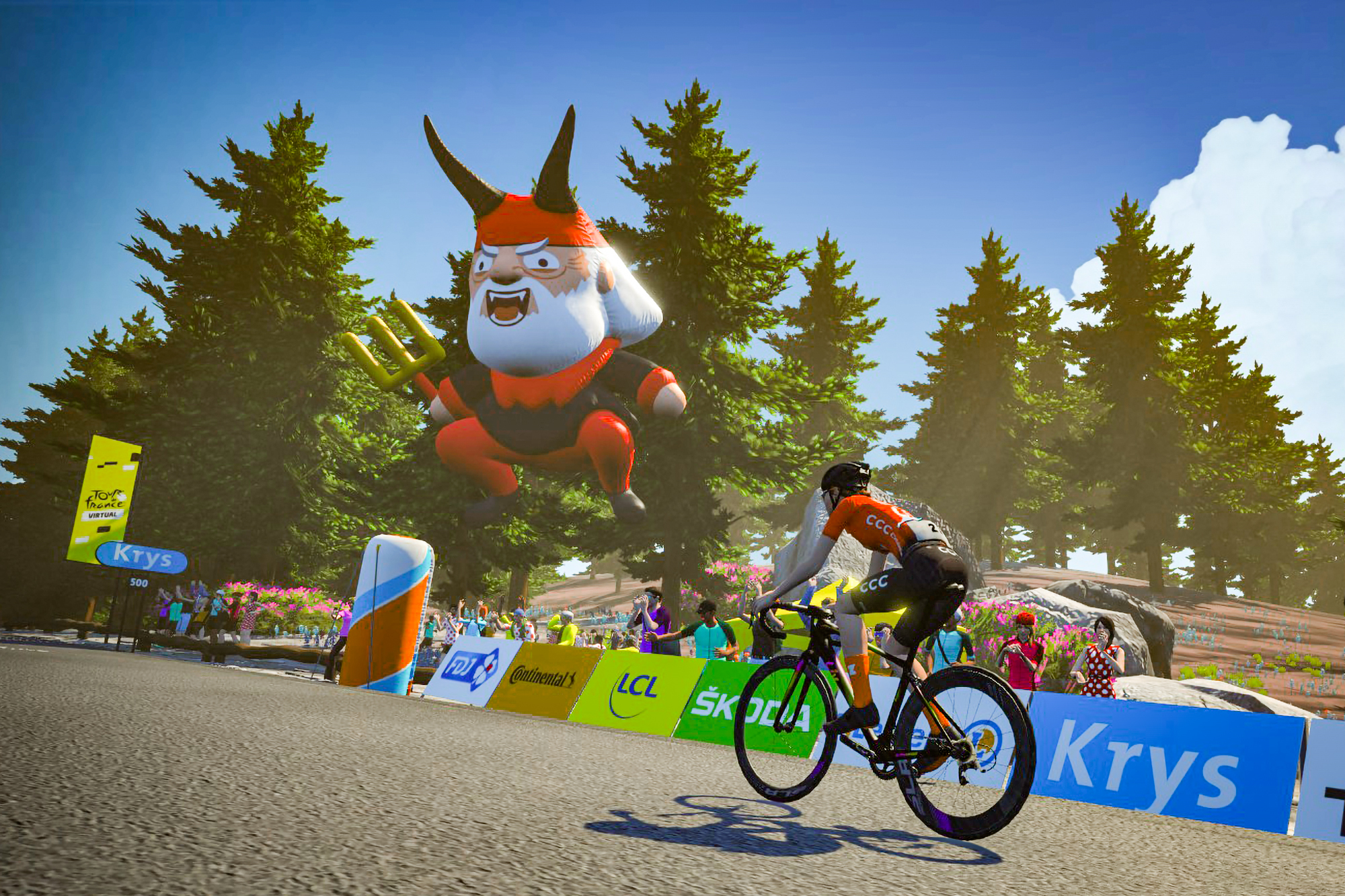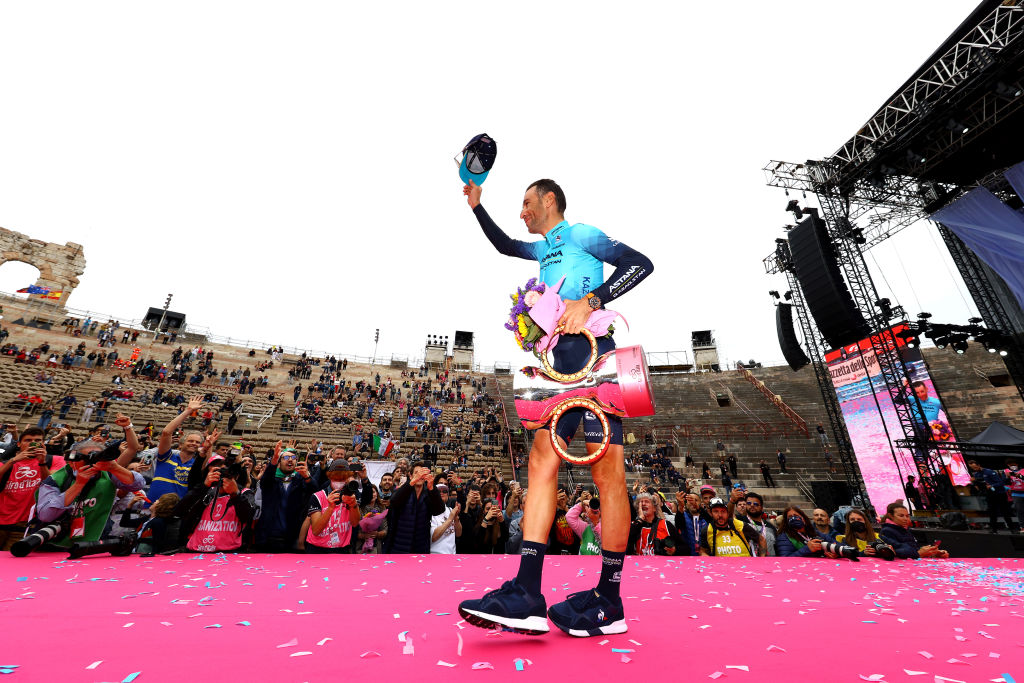
Less than two weeks ago, Zwift announced a major update to its Cycling eSports Ruleset with version 1.0.7. Most of the changes only apply to high-level racers, and so the majority of Zwifters won’t be affected. But if you’re reading this, there’s a good chance you’re in that upper echelon of eSports racers, so let’s dive into the details of the latest ruleset update.
In summary, these are the significant changes to look out for in Zwift’s Cycling eSports Ruleset Version 1.0.7:
- Smart trainers and smart bikes must have a manufacturer-claimed power accuracy of within +/- two per cent
- Equipment and techniques not permissible or effective in real-life cycling are prohibited
- A number of updates to the performance verification process
- Pre-race performance verification data must be submitted at least 14 days prior to the applicable event
- Updates to pre-race test course instructions
- Real-life cycling race rules shall be applied to Zwift Cycling eSports events of the same format
- Updates to minimum age requirements for events and event series participation
It is important to note that all of these rules apply to “Zwift Cycling eSports events,” namely the Zwift Premier League and Zwift Racing League. Technically, these rules could apply to all Zwift races, but the rules seem to be a bit more lax for the lower-tier races. When there’s more on the line, Zwift is more likely to be there putting the hammer down on potential cheaters.
Power accuracy within +/- two per cent
Perhaps the biggest update to the eSports ruleset, and one that has gotten many riders talking, is the new requirement for smart trainers and smart bikes to have a manufacturer-claimed power accuracy of +/- two per cent or better, immediately ruling out some of the best turbo trainers.
A full list of Zwift-supported trainers can be found here.
Of course, the updated rule is a great move towards accuracy and transparency when it comes to high-level Zwift racing. With as many updates and specific protocols that Zwift has already set into place, it is extremely difficult and risky to attempt to cheat using a fake weight or height on Zwift. Since the addition of Zwift's dual recording requirements, pre and post-race performance verification data, and a litany of trainer and power meter calibration protocols, it is extremely difficult to cheat on Zwift in any way.
For the last few years, the relaxed power accuracy requirements meant that through no fault of their own, riders could be getting a boost based on their trainer’s claimed power accuracy. With some trainers offering accuracy of within +/- three per cent, this could lead to a difference of up to six per cent between two competitors on the same equipment.
The latest race content, interviews, features, reviews and expert buying guides, direct to your inbox!
But with the latest Ruleset update, Zwift is hoping to narrow that power accuracy gap, and get all elite-level racers on as accurate of equipment as possible.
However, upping the requirement is not as simple as it sounds. Manufacturers are known for claiming power accuracy that is far from true. Some manufacturers claim +/- two per cent, when in reality it’s closer to five, and vice versa. We’re not calling out any manufacturers in particular either. Depending on the year, model, and manufacturer, it borders on impossible to suggest that there is a smart trainer out there that is always as accurate as its manufacturer claims.
In addition, there are riders out there using cheap zwift setups who will be put off by the fact that they now have to make a $500-plus investment in a new trainer, just to compete in high-level Zwift racing. Imagine having been on the Tacx Flux 2 for the last three years and absolutely loving it. Now, thanks to the latest Ruleset update, you now have to buy a completely different trainer just to compete in Zwift racing. All for half a percentage point of claimed power accuracy. Frustrating, to say the least.
- How to race on Zwift: Top tips and setup advice
Equipment and technique restrictions
Next on the list is the restriction of equipment and techniques that would be banned or unhelpful in real-life cycling events. The details on this one are a bit complicated, so let’s take it step-by-step.
The use of fans and towels is still allowed, because these equipment/techniques are used to manage body heat, and are just as helpful in real-life events as they are on Zwift. This rule really goes after the use of technological and pedalling loopholes that riders sometimes use to trick Zwift into thinking they’re faster than they actually are.
Zwift says that this rule is not meant to limit innovation, but rather to “avoid the exploitation of ‘non-sporting' loopholes…this includes, but is not limited to, exploitation of disconnections/lag/dropouts/software bugs, unusual pedalling styles…” The rule goes on to state that a rider who believes they have found a ground-breaking innovation should first seek advice from Zwift before using it in competition.
I have seen these techniques first-hand in a number of Zwift races – riders spiking up to 10w/kg for a few seconds at a time, then dropping back down to 0-0.9w/kg, then spiking right back up. They seem to repeat this technique for the entire race, and somehow always beat me at the finish. This technique is known as “sticky watts,” and is now officially banned from Zwift racing. The powers that be are going to start cracking down on these riders, who are taking advantage of a software loophole that wouldn’t translate to real-life success.
Rocker plates are not explicitly banned according to the new Ruleset, but I wouldn’t be surprised to hear Zwift come out with some more clarification closer to the next Zwift Racing League season. There has been chatter in the comments and forums with riders looking for a potential answer, since rocker plates (arguably) don’t assist with natural performance enhancement (i.e. temperature management), and they are quite unusual. Zwift’s stance remains to be seen.
There is still no word from Zwift on any techniques or equipment that could be permissible for riders competing at altitude. As we know, high altitude negatively affects aerobic performance, and so altitude-dwelling Zwifters are at a constant disadvantage due to elevation alone. It’s a complicated issue with no easy answer, but we’re hoping that Zwift is working on something in the background to help level the playing field for riders competing at all elevations.
Performance verification
Zwift, the Zwift Accuracy and Data Analysis group (“ZADA”), and the Zwift Performance Verification Board combine to form a serious anti-doping presence in the world of Zwift. Any rider who has ever competed in a high-level Zwift race knows just how detailed and methodical the ZADA Performance Verification process is. A detailed flowchart of the process can be found on Page 9 of the latest Ruleset.
Riders are required to submit pages of information at least 14 days prior to their event, information that includes, but is not limited to: public Strava data, FIT files from a litany of all-time power bests ranging from 5 seconds to 20 minutes, makes, models, and photos of smart trainer and power meter equipment, video weigh-ins and height videos, as well as video and data files from the completion of a Pre-Race Test Course.
The last point on this list is the latest update to the eSports Ruleset. ZADA’s previous performance verification test was known as the Three Sisters Test, for which Zwift laid out detailed step-by-step instructions for riders to complete the Three Sisters route in Watopia, while doing all-out efforts on the Watopia Forward KOM, Watopia Epic KOM, Volcano KOM, and finishing with an all-out sprint for the last 300m into downtown Watopia. These power tests were then used as a rough benchmark of performance data for the given rider, since these efforts corresponded to about 90 seconds, 20 minutes, 6 minutes, and 15 seconds, respectively.
With the new Pre-Race Test Course, riders will have to complete a specific workout on Watopia’s Tempus Fugit course that includes efforts of 15 seconds, 1 minute, 4 minutes, 7 minutes, and 12 minutes. Sounds painful.
I’m only inferring here, but I’m guessing the new Pre-Race Test Course is meant to better mimic in-race conditions, given that riders will be completing the majority of the efforts with only a few minutes of recovery from the previous effort. As opposed to the Three Sisters test – where riders could take as long as they’d like to recover between efforts – the new Pre-Race Test Course is much closer to how a Zwift race will play out, with very little recovery between maximal efforts.
Those are the major updates from Version 1.0.7 of the Zwift Cycling eSports Ruleset – some will be upset about the new trainer restrictions, but overall, it’s a step in the right direction for Zwift and accurate performance verification. It will be interesting to see what other “non-sporting” techniques riders discover and then have banned by Zwift in accordance with the new rules. But I think it can all be summed up best by my favourite two lines in the latest Ruleset from Zwift: 'Be nice to others' and 'don’t cheat'.
Zach is a freelance writer, the head of ZNehr Coaching, and an elite-level rider in road, track, and e-racing. He writes about everything cycling-related, from buyer's guides to product reviews and feature articles to power analyses. After earning a Bachelor’s Degree in Exercise Science at Marian University-Indianapolis, Zach discovered a passion for writing that soon turned into a full-fledged career. In between articles, Zach spends his time working with endurance athletes of all abilities and ages at ZNehr Coaching. After entering the sport at age 17, Zach went on to have a wonderful road racing career that included winning the 2017 Collegiate National Time Trial Championships and a 9th place finish at the 2019 US Pro National Time Trial Championships. Nowadays, Zach spends most of his ride time indoors with NeXT eSport.
